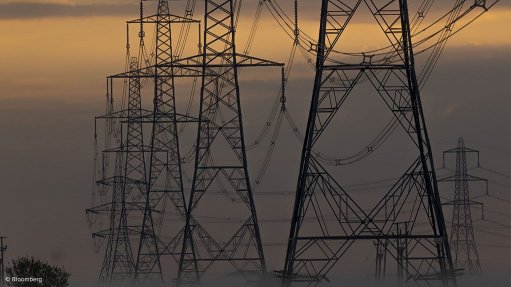Implats defers production target, reviews capex, ups new technology plans

Impala Platinum CEO Terence Goodlace tells Mining Weekly Online’s Martin Creamer that the company is going all out to win the hearts and minds of the company’s employees, 40 000 of whom have returned from the country’s longest strike in history. Photographs: Duane Daws. Video: Nicholas Boyd and Duane Daws. Video Editing: Shane Williams.
JOHANNESBURG (miningweekly.com) – Strike-impacted platinum-mining company Impala Platinum (Implats) has deferred its 850 000 oz Rustenburg production target, is reviewing its capital expenditure (capex) programme intensively and is going all out to ramp up its post-strike restart to 250 000 oz of platinum from Rustenburg in the first half of its financial year to December 31.
The JSE-listed company on Thursday posted an unsurprising 25.5% fall in refined platinum output to 1.18-million ounces, lost production of 312 000 platinum ounces at the strike-centred Impala Rustenburg, 17.6% higher unit costs and a 74% plunge in headline earnings a share to 86c for the 12 months to June 30.
No dividend was declared for the year as part of Implats’ ongoing strategy to preserve cash.
Impala Rustenburg was said to be 65% on the way to its half-year target following 20 000 restart medicals and heat tolerance tests and 40 000 returnees being put through induction and safety protocols.
A safety plus is that first-aid training has been intensified and supply has been concluded into the working areas, which have been re-entered.
The 850 000 oz target set a year ago has been deferred to an unspecified date and the strike-caused opportunity loss in the first quarter of Implats’ new financial year is 140 000 oz of platinum that will not be available for sale owing to the impact of the strike and the need to restart in a low-risk manner.
Much consideration is also taking place in the review of the company's capex programme.
“We need to do complete replanning of all of our capital projects to take cognisance of what has happened with the strike and the contractors and the more specific underground conditions at 16 shaft in particular,” Implats CEO Terence Goodlace told Mining Weekly Online in a one-on-one video interview (see attached).
At the 17-shaft project, ore-reserve development has been decimated to match affordability, from intended capex of R1.4-billlion to an actual capex of R400-million.
“We’ve had to focus only on the main shaft and on the critical path activities,” Goodlace explained.
In the meantime, steps are being taken to modernise the workplace in line with future scenarios.
Plans for a fully mechanised Afplats project will be taken to the board and then the market by February on the basis of low-profile mechanised equipment, in conjunction with bord-and-pillar mechanised mining, being sufficiently advanced for implementation.
While narrow reef at a dip remained a challenge, there was more than ample opportunity to mechanise and modernise orebody development and all new shafts.
While the use of explosives would continue in the medium term, nonexplosive extraction methods, similar to the reef-boring technology under test at AngloGold Ashanti Tau Tona gold mine, was envisaged.
Among the technologies being considered in the immediate term were signalling devices for winches and the possibility of introducing remotely controlled winches to improve operating conditions.
Already in widespread use for safety reasons are proximity detection systems, self-contained self-rescuers and overhead nets and bolts in all the working areas, while under consideration is the introduction of a zero incident process, which takes into account the inner workings of the human brain to enhance safety.
On fundamental demand, Goodlace told Mining Weekly Online that fundamental demand for palladium in particular was strong at the moment, driven by the large number of new petrol-driven cars coming into use.
But platinum demand was being hit by static demand for diesel cars in Europe in particular.
In the long term, fuel cells were expected to drive up demand for platinum.
“Overall, the fundamental demand for the products is good,” Goodlace commented to Mining Weekly Online.
But a combination of aboveground stocks and the sheer volume of recycling of the platinum-group metals were having a dampening affect on prices.
More than 1.2-million ounces of platinum a year come back into the market from recyclers, who last year put two-million ounces of palladium into the market compared with the 700 000 oz produced by Implats.
“That’s the big overhang we have, above-ground stocks and a huge quantum of recycled metal that’s coming back in,” Goodlace said. (Also watch attached Mining Weekly Online video).
As a consequence, Implats was positioning itself on a productivity and cost-curve basis to maintain its competitiveness.
Outside of the strike-hit Rustenburg area, the company’s Zimplats, Mimosa, Marula and Two Rivers operations all performed well and throughout the five-month strike, deliveries continued to key customers and, in particular, to the local South African market that remained adequately stocked during the strike.
“The lack of dividend should be no surprise. News on any major restructuring plans has been left for another day, it appears, and we expect that the company will first see where it gets to at full ramp-up,” said Investec Securities in a note.
Four Implats employees - Osika Chidhakwa, Lebogang Moiteri, Khalepile Matama and Shaun Pelser - lost their lives on duty during the year.
Recent developments at the Marula mine point to the possibility of an Association of Mineworkers and Construction Union (AMCU) majority at the mine and formal structures have been established for the necessary engagement.
Mining Weekly Online understands that AMCU’s membership at Marula now stands at 60%.
Implats will be implementing a range of activities over the short- and medium-term aimed at building better relationships across the organisation and winning the hearts and minds of employees through.
Relationships were being created from the top of organised labour all the way down through the structures on the understanding that it was the role of the company to communicate directly with its own employees.
“You cannot win the hearts and minds if your working places aren't right. The conditions have to be good and modern. Reward also has to be up to scratch and ultimately you have to give employees the ability to do the jobs,” Goodlace said at the early morning media roundtable in response to Mining Weekly Online.
Implats’ average 2013 platinum price was $1 487/oz, while the average price achieved during the first six months of 2014 was $50/oz lower at $1 437/oz.
The palladium price, on the other hand, which averaged $725/oz in 2013, increased to $780/oz for the first six months of 2014.
Rhodium averaged $1 045/oz in 2013, which increased to $1 069/oz in the first six months of 2014, reflecting a fundamentally balanced market.
The average rand:dollar exchange rate achieved of R10.36 to the dollar was 17.6% weaker than the prior year. Consequently, although the dollar revenue an ounce decreased by 8.2%, the rand revenue an ounce increased by 7.9%.
Group production deteriorated from 1.582-million ounces of platinum to 1.178-million ounces owing mainly to the strike.
Total development decreased to 61.3 km from 97.4 km in 2013, while on-reef development declined by 28.9% to 21.1 km.
Management continues to engage with the government of Zimbabwe on indigenisation, corporate taxation, royalty dispensation and the commitment to primary beneficiation within Zimbabwe.
Comments
Press Office
Announcements
What's On
Subscribe to improve your user experience...
Option 1 (equivalent of R125 a month):
Receive a weekly copy of Creamer Media's Engineering News & Mining Weekly magazine
(print copy for those in South Africa and e-magazine for those outside of South Africa)
Receive daily email newsletters
Access to full search results
Access archive of magazine back copies
Access to Projects in Progress
Access to ONE Research Report of your choice in PDF format
Option 2 (equivalent of R375 a month):
All benefits from Option 1
PLUS
Access to Creamer Media's Research Channel Africa for ALL Research Reports, in PDF format, on various industrial and mining sectors
including Electricity; Water; Energy Transition; Hydrogen; Roads, Rail and Ports; Coal; Gold; Platinum; Battery Metals; etc.
Already a subscriber?
Forgotten your password?
Receive weekly copy of Creamer Media's Engineering News & Mining Weekly magazine (print copy for those in South Africa and e-magazine for those outside of South Africa)
➕
Recieve daily email newsletters
➕
Access to full search results
➕
Access archive of magazine back copies
➕
Access to Projects in Progress
➕
Access to ONE Research Report of your choice in PDF format
RESEARCH CHANNEL AFRICA
R4500 (equivalent of R375 a month)
SUBSCRIBEAll benefits from Option 1
➕
Access to Creamer Media's Research Channel Africa for ALL Research Reports on various industrial and mining sectors, in PDF format, including on:
Electricity
➕
Water
➕
Energy Transition
➕
Hydrogen
➕
Roads, Rail and Ports
➕
Coal
➕
Gold
➕
Platinum
➕
Battery Metals
➕
etc.
Receive all benefits from Option 1 or Option 2 delivered to numerous people at your company
➕
Multiple User names and Passwords for simultaneous log-ins
➕
Intranet integration access to all in your organisation


















